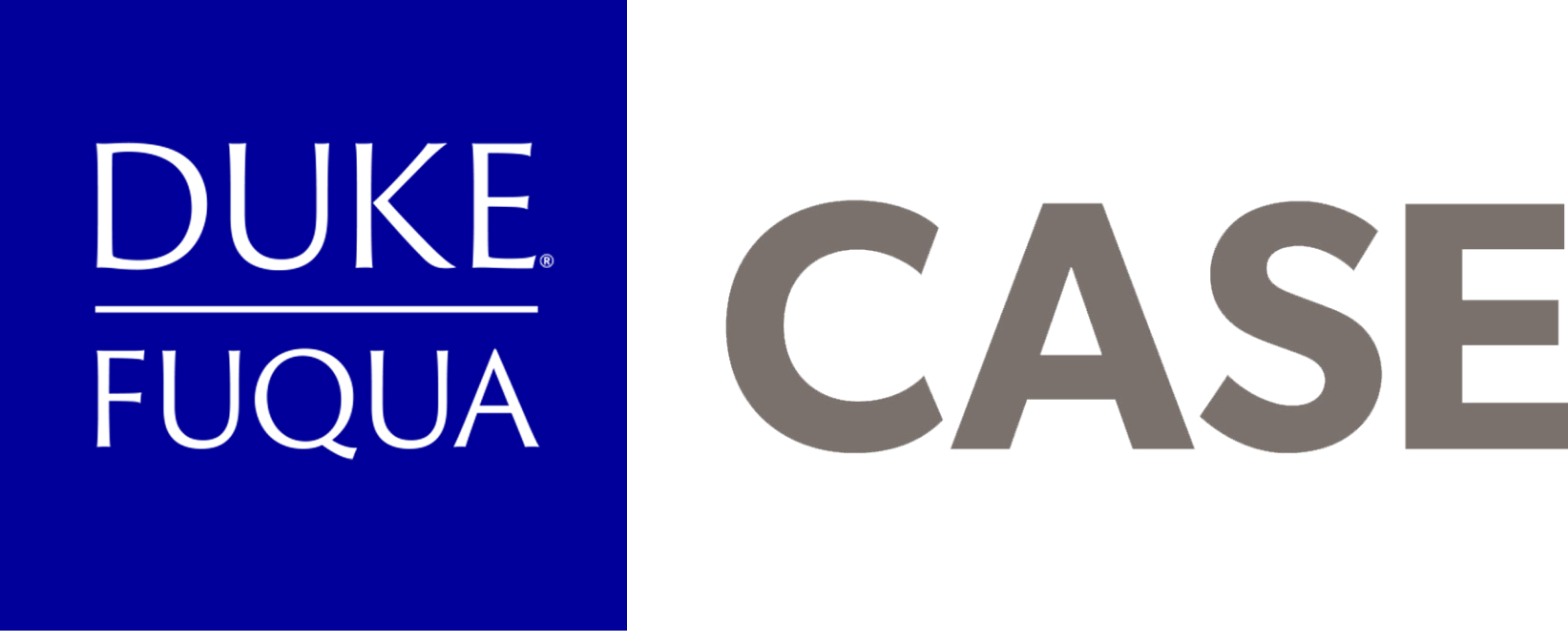This post was written by Daniella Allam, Duke MBA student and a CASE Fellow, in May 2015.
On April 8, CASE hosted a workshop on tri-sector leadership, the center’s theme of the year. The workshop, led by Matthew Thomas of Prospect Madison, was an interactive session that let participants work through their assessments of their own tri-sector leadership. Prospect Madison is a tri-sector leadership advisory firm aimed at enhancing collaboration across the business, government and non-profit sectors to address society’s most pressing issues.
Matt has published his work in the Harvard Business Review (Triple Strength Leadership) and was previously the co-founder and executive director of The Intersector Project, a consultant with McKinsey & Company, an economist with the Department of Finance Canada, and an investment banking analyst with Morgan Stanley. Matt is clearly an embodiment of tri-sector leadership in action!
We started off the morning with a fun twist when Matt brought science into the conversation to help us understand tri-sector collaboration better. He did this by going back to the physics equation we learned in high school of impact being a product of mass x speed x direction. Under this framework, we can think of governments representing the mass, business having the speed and agility, and nonprofits/academic institutions providing the direction to focus efforts. I thought that was a clever way of looking at how every sector brings its own unique contribution and every part of the formula is a critical part of maximizing impact for the greater good.
After talking about tri-sector leadership more broadly, Matt dove into the six traits that define a tri-sector leader. He defined these as:
1) Balanced motivations
2) Prepared mind
3) Intellectual thread
4) Contextual intelligence
5) Integrated network
6) Transferrable skills
The workshop focused on the first and last traits: balanced motivations and transferrable skills. Every participant had taken an assessment created by Prospect Madison for both of these traits, so we received our results during the session and used them to guide the discussion. The most valuable part of getting the results and discussing them was the chance to interact with other people that have had similar experiences and similar results.
The majority of participants felt that the results were accurate and well presented – having the balanced motivations results in particular helped all of us think more critically about what values drive us to have impact in our respective fields. Instead of putting me in a box, these results helped me clarify what my priorities are as a leader and how I can better leverage them in my career. It also helped me see that some of the areas where I could have more balance and pay more attention to in the future.
Personally, one of the key takeaways from the workshop was the idea that as tri-sector leaders, we should turn what we perceive as our deficits into strengths. For example, instead of people in the nonprofit sector feeling like they have no place talking with business leaders, they should feel empowered for the unique perspective they bring to the table. Same goes with business leaders that feel disconnected from policy discussions that are actively impacting legislation in their field.
As professionals trying to become more impactful leaders, we provide invaluable insights not only to the organizations and stakeholders we serve directly but also those that are indirectly affected by our decisions. The skill and knowledge gaps that we inevitably have are not deficits but merely growth opportunities on the path to becoming better tri-sector leaders.
The goal with tri-sector leadership is not to reach 100% proficiency across all sectors, motivations and skills. Rather, we can become more aware of our strengths and gaps, using them to more effectively impact the stakeholders we wish to serve. We all bring necessary contributions to the impact equation.

